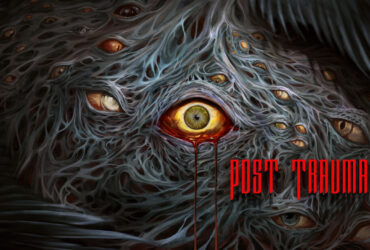Following the success of Atlus’ newest IP in Metaphor: ReFantazio, it seems likely that a new cornerstone of the developer’s catalog could be joining Persona and mainline Shin Megami Tensei moving forward. While those mainstays have always shared many traits in their premises and gameplay elements alike, however, the world of Metaphor: ReFantazio represents an experimental departure away from those more modern settings which has paid off. With mounting comparisons to classic Final Fantasy entries due to taking up a growing share of the turn-based RPG market, this bold evolution should serve to drive a similar energy in Square Enix’s flagship series.
The artistic direction of FF16 being a full return to a medieval setting is a landmark moment for Final Fantasy, as it’s a franchise which has increasingly integrated both modern and light science fiction elements over time. Geopolitics of warring kingdoms without many anachronistic elements in sight have set the adventure of Clive Rosfield apart, but the switch to action RPG combat has also left the series’ original niche unoccupied. In the same way that Atlus may have been inspired in its recent release, FF taking notes from the likes of Persona could be a fresh take on an aging legacy.

Related
A Final Fantasy Tactics Remake Could Get the Lion’s Share, But Would Need to Act Fast
Even if the idea of a Final Fantasy Tactics remake seems exciting to many fans of the original, the context surrounding its release is challenging.
Finding Success in a Medieval World After Decades of Shin Megami Tensei
It’s not strictly adherent to one time period in specific, but the United Kingdom of Euchronia in Metaphor: ReFantazio is a massive aesthetic change from the typically urban-inspired settings of Persona. Traditionally, Atlus has thrived on bringing esoteric, mythological figures and powers into modern cities, but this departure into epic fantasy worldbuilding taps into the JPRG tropes that the company originally subverted. References to real-life history have formed a robust thematic foundation for breaking down the game’s symbolism, showcased directly in the use of the Esperanto word Fantazio to reflect ideas about global unity and utopia.
There are implications that Euchronia actually exists after the post-apocalyptic remnants of current civilization have faded away, but the overall content of its style is deeply steeped in new forms of familiar fantasy elements. It could be argued that this quasi-medieval sentiment actually ties Metaphor: ReFantazio to Final Fantasy to an even further degree, but Square Enix doesn’t need to repeat the same formula as it continues.
The Next Final Fantasy Could Mirror Atlus’ Efforts Through Taking Inspiration From Persona’s Modern Setting
Subverting the Pattern Established Final Fantasy 16 and Metaphor: ReFantazio
After beginning with a classic fantasy adventure, the franchise found itself heavily leaning into steampunk and sci-fi elements by the time of FF6. Valisthea of Final Fantasy 16 is a hard pivot into revamped medieval intrigue, a change that can be attributed to overall media trends as much as a desire to return to series origins. This can be reflected in even Atlus electing to take a shot at Metaphor being the opposite of SMT, but it also makes staying on this path predictable across the board.
The Potential to Go Beyond Even the Contemporary Vibe of Noctis’ Journey
Instead of the full dive into sci-fi aesthetics that dominated the FF13 era, the direction of Final Fantasy 15 saw it veer uncannily close to reality through its incorporation of many modern designs. Its greater world was still grounded in the series’ magical tone, but going even deeper into simulating current times could allow the next game to capture a similar appeal to Persona. There’s hardly a bolder move for Final Fantasy 17 to take than scaling back into a more intimate story that parallels the real world, and that kind of innovation has been shown to be rewarded by players now more than ever.















Leave a Reply